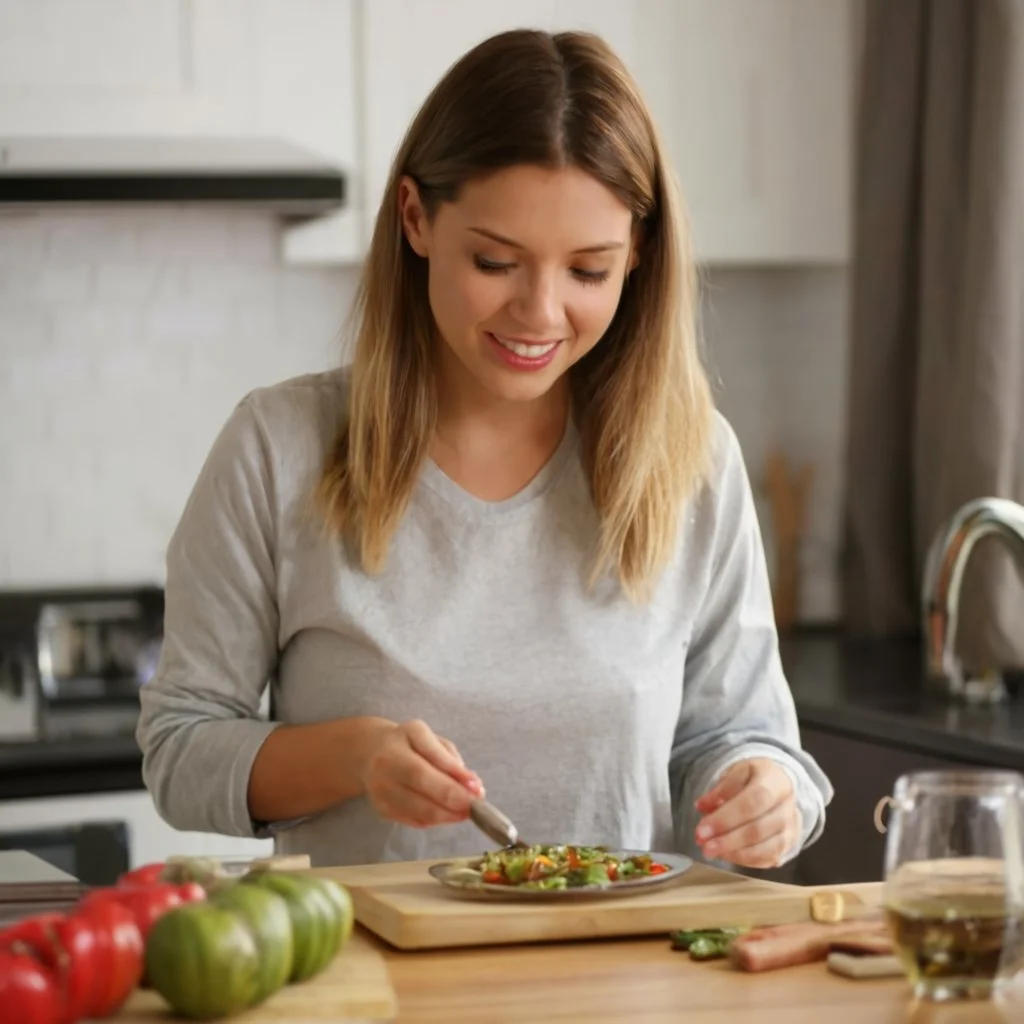Crab Brulee Recipe is a novel culinary delight that marries the richness of seafood with the classic French dessert. This dish is a testament to the versatility of cooking, showcasing how two seemingly disparate elements can create a harmonious and luxurious taste experience. The recipe’s origin can be traced back to the traditional creme brulee, a dessert known for its creamy custard base and caramelized sugar crust, now ingeniously fused with the delicate flavors of crab.
Historical Background of Crab Brulee Recipe
Creme Brulee, a dessert that dates back to the early 17th century, has evolved over the years. Originally a simple combination of cream, eggs, and sugar, it has now become a canvas for culinary innovation. The addition of crab to this centuries-old recipe is a modern twist that respects the dessert’s rich history while introducing a contemporary flavor profile. To learn more about the history of Creme Brulee, check out this comprehensive guide.
Essential Ingredients for Crab Brulee Recipe
Creating a Crab Brulee is an exquisite culinary endeavor that requires a selection of specific ingredients to achieve its unique blend of flavors and textures. Here’s a detailed list of the essential ingredients needed to prepare this innovative dish:
Fresh Crab Meat
- Crab Meat: The star of the dish, fresh crab meat is essential for its delicate, sweet flavor. Lump crab meat or backfin crab meat are ideal choices for their texture and taste.
Creamy Base Ingredients
- Heavy Cream: Forms the rich, velvety base of the brulee. Heavy cream provides the necessary fat content for a smooth and creamy texture.
- Egg Yolks: Egg yolks are crucial for thickening the brulee mixture, giving it a custard-like consistency.
- Granulated Sugar: A small amount of sugar balances the savory notes of the crab and cream.
Flavor Enhancers for Crab Brulee Recipe
- Salt: Enhances the overall flavor of the dish. A pinch of sea salt is preferred for its natural taste.
- White Pepper: Adds a subtle, mild heat to the brulee without overpowering the crab’s flavor.
- Fresh Herbs: Herbs like chives or dill can be finely chopped and added to the mixture for an aromatic touch.
For the Crab Brulee Recipe Topping
- Parmesan Cheese: Grated Parmesan cheese can be used as a savory alternative to the traditional caramelized sugar topping. It adds a crispy, golden crust when broiled or torched.
- Panko Breadcrumbs: Optional, but they can add an extra layer of crunch to the topping.
Additional Enhancements for Crab Brulee Recipe
- Lemon Zest: A bit of lemon zest can brighten up the dish, complementing the crab’s sweetness.
- Butter: A small amount of melted butter can be mixed with the crab meat to enrich its flavor.
Garnishing
- Fresh Parsley or Cilantro: For garnishing and adding a fresh, vibrant look to the dish.
- Edible Flowers: Optional, but they can add an elegant touch to the presentation.
Each ingredient in the Crab Brulee plays a vital role in creating a harmonious balance between the rich, creamy base and the delicate, sweet crab meat. The choice of fresh, high-quality ingredients is key to bringing out the best in this sophisticated and flavorful dish.
For more on the health benefits of crab meat, visit Healthline.
Step-by-Step Preparation Guide for Crab Brulee Recipe
Creating a Crab Brulee is a delightful culinary experience. Follow this step-by-step guide to prepare this exquisite dish:
1. Preparing the Ingredients of Crab Brulee Recipe
- Crab Meat: Ensure the crab meat is fresh and free of shells. If using canned crab meat, drain and pat it dry.
- Eggs: Separate the yolks from the whites. Only the yolks will be used in this recipe.
- Herbs and Lemon Zest: Finely chop the herbs and grate the lemon zest.
2. Preheat the Oven
- Set your oven to 325°F (163°C). This moderate temperature is ideal for baking the brulee without curdling the eggs.
3. Mixing the Cream Base
- In a saucepan, gently heat the heavy cream until it’s warm but not boiling.
- In a separate bowl, whisk together the egg yolks and sugar until well combined.
- Gradually add the warm cream to the egg mixture, stirring continuously to prevent the eggs from scrambling.
- Stir in a pinch of salt, white pepper, and the lemon zest.
4. Combining Crab Meat
- Gently fold the crab meat and chopped herbs into the cream mixture. Be careful not to overmix to maintain the crab’s delicate texture.
5. Preparing the Ramekins
- Lightly butter the inside of your ramekins. This prevents sticking and adds a subtle buttery flavor.
- Evenly distribute the crab and cream mixture into the ramekins.
6. Baking the Brulee
- Place the ramekins in a deep baking dish and fill the dish with hot water until it reaches halfway up the sides of the ramekins. This water bath helps cook the brulee evenly.
- Carefully place the baking dish in the preheated oven.
- Bake for about 30-35 minutes. The brulee should be set but still slightly wobbly in the center.
7. Adding the Topping
- Remove the ramekins from the oven and let them cool slightly.
- Sprinkle a thin layer of grated Parmesan cheese and breadcrumbs (if using) on top of each brulee.
- Using a kitchen torch, carefully caramelize the topping until golden brown. Alternatively, you can place the ramekins under a broiler for a few minutes to achieve the same effect.
8. Garnishing and Serving
- Let the brulees cool for a few minutes, then garnish with fresh parsley or cilantro.
- Serve warm as an elegant appetizer or a unique main course.
Tips:
- Temperature Control: Keep a close eye on the brulee while baking to ensure it doesn’t overcook.
- Water Bath: Be careful not to splash water into the ramekins when setting up the water bath.
- Caramelizing: When using a torch or broiler for the topping, aim for an even, golden crust without burning the cheese.
Enjoy your homemade Crab Brulee, a dish that’s sure to impress with its delightful blend of flavors and textures!
Tips for Perfecting the Crab Brulee Recipe
Creating the perfect Crab Brulee requires attention to detail and a few culinary tricks. Here are some tips to help you master this exquisite dish:
1. Selecting the Right Crab Meat
- Quality Matters: Use the freshest crab meat available. Fresh lump crab meat is ideal for its flavor and texture.
- Drain Well: If using canned crab meat, ensure it’s thoroughly drained and patted dry to prevent excess moisture from affecting the custard’s consistency.
2. Achieving the Perfect Custard
- Temperature Control: Heat the cream gently. Overheating can cause the eggs to curdle when mixed.
- Gradual Mixing: Slowly incorporate the warm cream into the egg yolks while continuously stirring to prevent the eggs from cooking.
- Strain for Smoothness: Strain the mixture through a fine sieve to remove any lumps, ensuring a smooth custard.
3. Baking Techniques
- Avoid Overbaking: Bake until the edges are set but the center is still slightly wobbly. Overbaking can lead to a rubbery texture.
- Water Bath: Use a water bath (bain-marie) to bake the brulees. This ensures even cooking and a silky texture.
4. Perfecting the Topping
- Even Layer: Apply an even layer of Parmesan cheese for the topping. Uneven layers can lead to inconsistent browning.
- Caramelization: Use a kitchen torch for more control when caramelizing the topping. If using a broiler, watch closely to prevent burning.
5. Flavor Enhancements
- Seasoning: Balance the seasoning in the custard. The crab meat is naturally salty, so adjust the salt accordingly.
- Herbs and Zest: Fresh herbs and lemon zest can significantly enhance the flavor. Use them sparingly to complement, not overpower, the crab.
6. Serving and Presentation of Crab Brulee Recipe
- Rest Before Serving: Allow the brulees to rest for a few minutes after caramelizing for the topping to set.
- Garnish Wisely: Use garnishes that add both color and a complementary flavor, like fresh herbs or a light sprinkle of paprika.
7. Experimenting with Variations
- Try Different Cheeses: Experiment with other cheeses for the topping, like Gruyere or Asiago, for different flavors.
- Add-Ons: Consider adding small amounts of finely chopped shallots or a dash of cognac to the custard for an extra flavor dimension.
By following these tips, you’ll be well on your way to creating a Crab Brulee that’s not only delicious but also visually stunning and sure to impress any guest.
Baking the Perfect Crab Brulee Recipe
Baking is a critical step in the recipe. The article provides guidance on how to bake the Crab Creme Brulee to perfection, ensuring that the custard is set but still has a slight wobble. The importance of a water bath during baking is also explained, as it helps to cook the custard evenly.
Creative Serving Suggestions for the Crab Brulee Recipe
Presenting Crab Brulee in a creative and appealing way can elevate the dining experience. Here are some innovative serving suggestions, incorporating ideas from Yummyolk, a treasure trove of culinary inspiration:
1. Elegant Individual Servings
- Serve the Crab Brulee in individual ramekins. This not only makes for an elegant presentation but also ensures each guest gets an equal portion of the caramelized topping. For a twist, consider using unique ramekin shapes to add visual interest.
2. Pair with Gourmet Sides
- Complement the Crab Brulee with light, gourmet sides. A fresh salad with a tangy dressing or a simple vegetable medley can balance the richness of the brulee.
3. Wine Pairing
- Enhance the flavors with a carefully selected wine pairing. A crisp white wine or a light rosé can complement the delicate flavors of the crab without overpowering them.
4. Garnish Creatively
- Use fresh herbs, edible flowers, or a sprinkle of paprika not just for added flavor, but also to create a visually appealing dish. A sprig of dill or parsley can add a pop of color.
5. Deconstructed Presentation
- For a modern twist, consider a deconstructed Crab Brulee. Serve the creamy crab mixture alongside a separate crisp, caramelized parmesan disc, allowing guests to combine the elements themselves.
6. Seafood Platter
- Incorporate the Crab Brulee into a larger seafood platter. Arrange it with other seafood delicacies like shrimp or smoked salmon for a luxurious appetizer spread.
7. Miniature Versions for Appetizers
- Create miniature versions of the Crab Brulee for a bite-sized appetizer. These can be a great way to start a meal or for serving at cocktail parties.
8. Themed Dinner Night
- Plan a themed dinner night and include Crab Brulee as the star of the show. For instance, a French-themed evening with various French-inspired dishes can make for a memorable dining experience.
Remember, the key to a successful presentation is not just in the taste but also in how appealingly the dish is served. Creative plating can turn the Crab Brulee into a conversation starter and enhance the overall dining experience.
Garnishing and Presentation Tips for Crab Brulee Recipe
The presentation of Crab Brulee can significantly enhance its appeal and elevate the dining experience. Here are some tips for garnishing and presenting this exquisite dish:
1. Choose the Right Garnishes
- Fresh Herbs: Sprigs of dill, parsley, or chives not only add a pop of color but also complement the flavors of the crab.
- Edible Flowers: Consider using edible flowers for an elegant and sophisticated touch.
- Lemon Zest: A sprinkle of lemon zest can brighten up the dish and add a hint of citrus.
2. Plate with Precision
- If transferring the brulee from ramekins to plates, do so carefully to maintain the shape. Use a warm knife to loosen the edges if needed.
- Wipe any spills or smudges off the plate for a clean, professional look.
3. Color Contrast
- Use plates that contrast with the color of the brulee to make the dish stand out. Dark plates can provide a striking background for the golden-brown crust.
4. Textural Elements
- Add a textural element like a crispy parmesan wafer or a small tuile biscuit on the side.
- Consider serving with a light salad or garnish that adds a crunchy texture, contrasting the creamy brulee.
5. Portion Size
- Ensure the portion size is appropriate for the course it’s serving. For appetizers, smaller portions are ideal.
6. Temperature Play
- Serve the brulee warm with a cool garnish, like a small dollop of crème fraîche or a chilled herb oil, to create a delightful temperature contrast.
7. Creative Plating Techniques
- Experiment with different plating styles, such as a central placement or an off-center arrangement, to find what best showcases the dish.
- Use garnishes to lead the eye across the plate, creating a visually appealing experience.
8. Sauce Accents
- If using a sauce, such as a light herb-infused oil, apply it sparingly. You can use a squeeze bottle for precision or lightly drizzle it around the brulee.
9. Height and Dimension
- Play with height by stacking elements or using garnishes that add verticality to the dish, giving it a more dynamic appearance.
10. Simplicity is Key
- While it’s tempting to add many elements, sometimes less is more. A few well-placed garnishes can often be more effective than a crowded plate.
By following these tips, you can turn your Crab Brulee into a visually stunning masterpiece that is as delightful to look at as it is to eat. Remember, the first bite is with the eyes!
Common Questions About Crab Brulee Recipe
Can Crème Brûlée Be Served Cold?
Yes, crème brûlée is traditionally served cold. The custard base is typically chilled in the refrigerator for several hours to allow it to set and develop a firm texture. This chilling process is crucial as it contrasts beautifully with the warm, caramelized sugar topping that is added just before serving. The combination of the cold custard and the warm, crispy caramelized sugar is what makes crème brûlée a unique and delightful dessert.
How to Make Crème Brûlée with a Blowtorch?
Making crème brûlée with a blowtorch involves caramelizing the sugar topping to create a crisp crust. Here’s how to do it:
- Sprinkle Sugar: Once the custard is chilled and set, evenly sprinkle a thin layer of granulated sugar over the surface of each custard.
- Torch the Sugar: Light the blowtorch and hold it so the flame is just above the sugar. Move it around evenly to melt the sugar. The sugar will first melt and then start to caramelize, turning a golden-brown color.
- Cool Before Serving: Allow the caramelized sugar to cool and harden for a few minutes before serving. This creates the signature hard caramel layer that is traditionally cracked with a spoon.
Is Crème Brûlée Caramelized?
Yes, the defining feature of crème brûlée is its caramelized sugar topping. After the custard base is cooked and chilled, a layer of sugar is sprinkled on top and then caramelized to create a hard, golden crust. This caramelization can be done using a blowtorch or by placing the crème brûlée under a broiler. The caramelized sugar adds a rich flavor and a contrasting texture to the smooth and creamy custard beneath.
Why Is Crème Brûlée Cooked in a Water Bath?
Crème brûlée is cooked in a water bath (or bain-marie) for the following reasons:
- Even Cooking: The water bath ensures gentle and even heat distribution, preventing the edges from cooking faster than the center.
- Temperature Control: It helps maintain a consistent temperature around the custards, which is crucial for achieving the silky texture without curdling the eggs.
- Moist Environment: The water bath creates a moist environment in the oven, which is essential for the custard to cook properly without cracking or becoming rubbery.
Cooking crème brûlée in a water bath is a classic technique that helps achieve the perfect texture and consistency characteristic of this beloved dessert.


